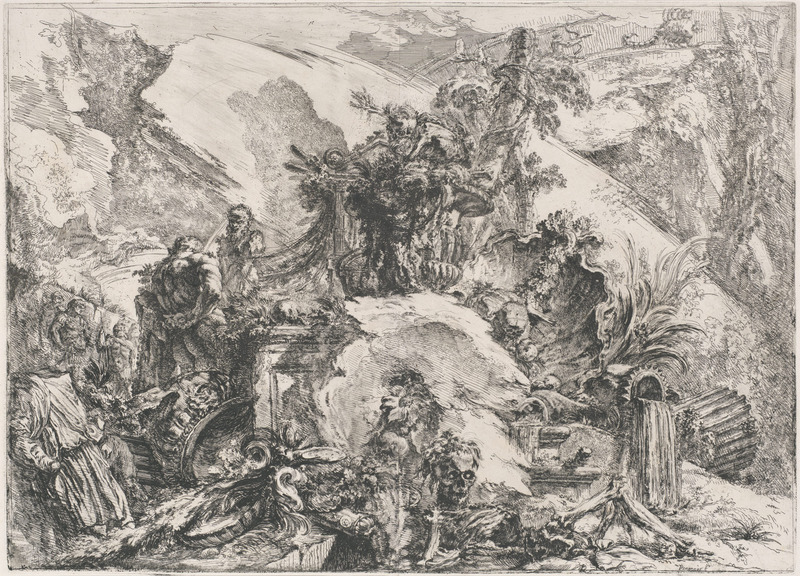I Grotteschi
I Grotteschi, or the Grotesques, were drawn by Piranesi on his first return to Venice from Rome (1730s). The extravagance and detailing in his etched line and the expansive ornamental “jumble” are evidently inspired by the decorative rococo work of Tiepolo. At a distance, these works are similar to the magnificent, beautiful, and ornamental paintings that Venetians preferred for wall decoration. However, a closer look at works like The Skeletons, reveals that there is nothing but shattered columns, sarcophagi, skulls, and other “grotesques.” In these etchings, Piranesi gave a new twist to the baroque infatuation with decay.18 The techniques in I Grotteschi and I Carceri have a sense of experimental freedom, which originated from Piranesi’s foundations in the world of Rococo Venice. His education and background in Venice provided him with the ability to create illusion through the medium of the capriccio (architectural fantasies). In I Grotteschi and I Carceri, one discovers Piranesi’s imaginative capacity. He reached heights in these works only comparable to those achieved by Tiepolo in his frescos due to the fact that, like Tiepolo, no artist had pushed the limits of their medium in the way that Piranesi had with etching19 I Grotteschi and I Carceri are meant to be works that express emotional and legible content through the technique of etching.20
_____________________________________________________________________________________
18Mayor, “Piranesi,” 281.
19Lucchi, Lowe, Pavanello, The arts of Piranesi, 127.
20Bevilacqua, Minor, Barry, “The Serpent and the Stylus,” 9.
